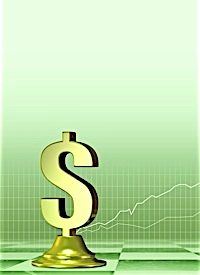
Buried in the latest report from the Bureau of Labor Statistics (BLS) on the Consumer Price Index was some disconcerting news. On the surface, there appeared to be little to be concerned about, with the index “for all items, less food and energy” rising just 0.2 percent in April. On an annual basis, the BLS “all items” index increased just 3.2 percent over the past 12 months.
However, that 3.2 percent was the highest since October of 2008, reflecting increases in energy of 19 percent, and gasoline of 33 percent over the last twelve months. And looking even more closely at the report, the energy index has increased ten months in a row, while the fuel oil index is up an astonishing 35 percent.
Prices of goods in the pipeline, as measured by the Producer Price Index showed an increase of 0.8% (10 percent on an annualized basis) in April, higher than the 0.7 percent increase in March. The BLS was candid in its assessment of these numbers, saying “The costs of corn, wheat, cotton and other commodities have also jumped due to strong global demand. That’s raised worries among some economists that consumer prices could also jump and inflation could surge. ”
Keeping in mind that the BLS continues to measure only the effect of the already increased supply of money has on prices, eventually and certainly, such numbers are primarily for government purposes and have little basis in the reality faced by consumers on a daily basis. John Williams has long presented more realistic numbers here, which show inflation approaching 10 percent on an annualized basis, and moving sharply higher.
According to Jim Rogers, Chairman of Rogers Holdings, the CPI numbers are all lies:
Have you looked at it? They’ve changed their accounting several times in the past few decades. When housing was 20-25% of the CPI and housing was going up, they didn’t count it. When rents weren’t going up, and then when housing prices started going down, they counted it.
These price increases are having the expected damping effect on consumers, as noted by Bloomberg: “Retail sales rose in April at the slowest pace in nine months and consumer sentiment declined. ”
Ryan Goldberg, at Minyanville, couldn’t resist the temptation to ask Bill Lapp, president of Advanced Economic Solutions (and former chief economist at Conagra Foods) to project the prices consumers will soon be paying on such items as a loaf of bread and a gallon of milk. Noting that much of the price increase in wheat, corn, sugar, coffee and other commodities is still in the pipeline, “the higher prices for these commodities amounts to some $40 billion in costs not yet passed on to the consumer. But the higher price tags are coming ‘sooner or later’…it’s a big liability in front of us. ”
Lapp estimates that consumers will soon be paying $2.16 for a loaf of bread, $3.86 for a gallon of milk, $4.71 for a pound of ground beef, $4.37 a pound for chicken breasts, $2.15 a pound for broccoli, $.68 a pound for bananas, $1.51 a pound for margarine, and $6.25 for a six-pack of beer. In New York City, residents could soon be paying $9.50 for a pound of boneless chicken breasts, and $8.76 for a six-pack of Budweiser.
All of this misses the point that the inflation “in the system” has already been created. The FRED Graph, available at the Federal Reserve Bank of St. Louis (here) shows the enormous increase in the M1 Money Stock just since the summer of 2008, increasing from $1.4 trillion to nearly $2 trillion. This is monetary inflation, created by the Fed, pure and simple. But the missing piece to the puzzle is something called the “velocity of money” or the M1 Money Multiplier, which measures how rapidly that stock of money is being turned over in the market place. Since last fall, that multiplier has fallen enormously as consumers have cut back on spending. However, a recent update shows that multiplier turning upward, which portends an increase in the prices at the consumer level as that huge stock of money begins circulating. If enough consumers begin to realize that holding cash is a loser’s game, with prices increasing and running away from them, then begins the inflationary spiral that could ultimately destroy the purchasing power of the dollar altogether.
Adam Fergusson’s When Money Dies explains in horrifying detail the impact German hyperinflation had on that country’s citizens in the early 1920s. He tells the story of Hans-George van der Osten who came into possession of one American dollar and decided to spend it with some friends: They “went to Berlin one evening determined to blow the lot; but early the next morning, long after dinner, and many nightclubs later, they still had change in their pockets. ”
Frau Eisenmenger tried to avoid the German inflation by putting her money into Austrian government bonds. When she tried to liquidate them, however, she was told: “My dear lady, where is the State which guaranteed these securities to you? It is dead. ” She wrote later in her diary:
A housewife who has had no experience of the horrors of currency depreciation has no idea what a blessing stable money is, and how glorious it is to be able to buy with the note in one’s purse the article one had intended to buy at the price one had intended to pay.
Few are suggesting that hyperinflation is just around the corner for American citizens, but it is clear that the stage has been set for just such a blow off. As John Maynard Keynes wrote:
There is no subtler, no surer means of overturning the existing basis of society than to debauch the currency. The process engages all the hidden forces of economic law on the side of destruction, and does it in a manner which not one in a million is able to diagnose.



